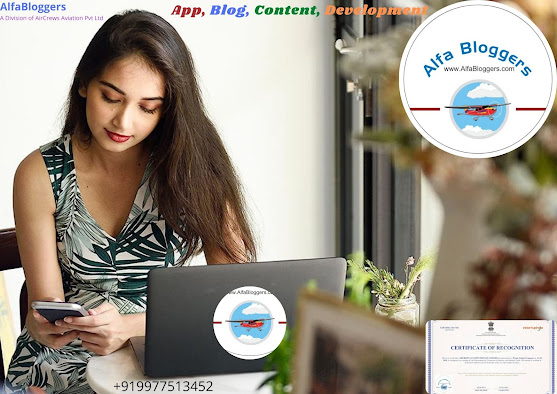BEST PRACTICES FOR PROFESSIONAL COMMUNICATION
Effective Communication is a crucial skill in any professional setting. Whether you're writing an email, attending a meeting, or presenting an idea, the way you convey your message can impact your success. Professional Communication requires clarity, respect, and a strategic approach to ensure that messages are well-received. Below are some best practices to enhance your Communication skills in the workplace.
1. Be Clear and Concise
Avoid using complex or ambiguous language. Get straight to the point while ensuring all necessary details are included. Whether written or spoken, clarity helps prevent misunderstandings and saves time.
Tips:
Use simple and direct language.
Keep emails and messages brief but informative.
Structure your content logically (e.g., introduction, main points, conclusion).
2. Use a Professional Tone
Your tone should reflect respect and professionalism, regardless of the Communication medium. Even in casual interactions, maintaining a courteous approach fosters positive workplace relationships.
Tips:
Avoid slang or overly informal expressions in emails and meetings.
Tailor your tone to your audience (e.g., formal for clients, slightly relaxed for colleagues).
Use polite phrases like “please” and “thank you” to demonstrate courtesy.
3. Active Listening and Engagement
Professional Communication is not just about expressing your ideas—it also involves listening actively to others. This fosters collaboration and mutual understanding.
Tips:
Maintain eye contact and use affirmative gestures (e.g., nodding) during conversations.
Avoid interrupting and ask clarifying questions when necessary.
Summarize key points to confirm understanding.
4. Choose the Right Communication Channel
Different situations require different Communication methods. Choosing the right platform can make interactions more effective and efficient.
Examples:
Email: Best for formal Communication, documentation, or when a response is not immediately needed.
Meetings or Video Calls: Ideal for discussions requiring collaboration or emotional intelligence.
Instant Messaging (e.g., Slack, Teams): Useful for quick, informal Communication with colleagues.
5. Master Email Etiquette
Emails remain one of the most Common forms of professional Communication. Ensuring that your emails are well-structured and respectful enhances clarity and professionalism.
Best Practices:
✔ Use a clear subject line that summarizes the email’s purpose.
✔ Start with a proper greeting (e.g., "Dear [Name]" or "Hello [Name]").
✔ Be specific and to the point while maintaining a polite tone.
✔ Use professional closing remarks such as "Best regards" or "Sincerely."
✔ Proofread for grammar and spelling errors before hitting send.
6. Be Mindful of Nonverbal Communication
Your body language, facial expressions, and tone of voice play a significant role in professional interactions.
Tips:
Maintain good posture and eye contact to convey confidence.
Use appropriate hand gestures to emphasize points.
Be aware of cultural differences in nonverbal Communication.
7. Give and Receive Feedback Constructively
Feedback is essential for professional growth, but how you deliver and receive it matters.
Giving Feedback:
✔ Use a positive and constructive approach rather than being overly critical.
✔ Focus on specific behaviours rather than personal attributes.
✔ Offer suggestions for improvement rather than just pointing out mistakes.
Receiving Feedback:
✔ Listen with an open mind and avoid defensiveness.
✔ Ask for clarification if needed.
✔ Show appreciation for feedback and work on applying it.
8. Be Culturally Aware
In a globalized workplace, professionals interact with colleagues and clients from diverse backgrounds. Cultural sensitivity helps in fostering strong and respectful relationships.
How to Improve Cross-Cultural Communication:
Learn about different cultural norms and Communication styles.
Avoid assumptions or stereotypes.
Adapt your Communication approach based on cultural expectations.
9. Use Technology Wisely
With remote work and digital Communication on the rise, using technology effectively is more important than ever.
Best Practices:
✔ Mute your microphone when not speaking during virtual meetings.
✔ Use professional backgrounds and dress appropriately in video calls.
✔ Be mindful of response times when using instant messaging platforms.
✔ Maintain cybersecurity practices by avoiding sharing confidential information carelessly.
10. Stay Professional in Difficult Conversations
At times, professionals need to address conflicts or deliver difficult messages. Handling these situations with professionalism can prevent misunderstandings and build trust.
Tips for Managing Difficult Conversations:
✔ Stay calm and composed, even in emotionally charged discussions.
✔ Focus on facts rather than emotions or personal attacks.
✔ Use "I" statements (e.g., "I feel concerned when deadlines are missed") instead of blame-based language.
✔ Seek win-win solutions where possible.
Professional Communication is a skill that requires continuous improvement. By practising clarity, respect, active listening, and adaptability, you can enhance workplace relationships, boost productivity, and achieve career success.
By integrating these best practices into your daily interactions, you'll not only Communicate more effectively but also establish yourself as a confident and professional team member.
What other Communication tips have worked for you? Share your thoughts in the Comments!
Olachi Ezinne Nnamdi
Virtual Executive Assistant
Asiatic International Corp
olachi.asiaticincorp@gmail.com
LinkedIn: http://www.linkedin.com/in/olachi-nnamdi
Link tree: https://linktr.ee/nnamdiolachi
Vcard: https://linko.page/olachi-nnamdi
Instagram: https://www.instagram.com/virtual_assistant_olachi
Fb Page: https://www.facebook.com/me/
YouTube :
https://www.youtube.com/aerosoYouTube : https://www.youtube.com/aerosoftcorp

No comments:
Post a Comment
Note: only a member of this blog may post a comment.